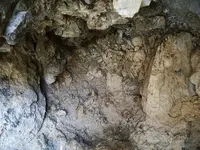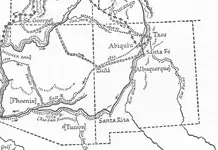Springfield
Silver Member
- Joined
- Apr 19, 2003
- Messages
- 2,850
- Reaction score
- 1,388
- Golden Thread
- 0
- Location
- New Mexico
- Detector(s) used
- BS
The scenario might include names like Peralta and Oritz. Possibly Salazar and Gonzales and other surnames of wealthy families in Santa Fe
during the period as well.
Not all members of course, but some.
Any family with accumulated wealth would have been concerned about looting by the invaders.
How many had relatives working or living to the west,in Arizona, at that time ?
Superstitions,Bradshaws,Mineral Mountains.
Certainly some experience as you mention would apply, so add it to your list if you see the possibility.
Regards:SH.
By all reports, Santa Fe was a nasty, squalid little outpost in the early 19th century with a few hundred Spanish bureaucrats and soldiers overseeing a meager trade economy from Chihuahua to supply the Franciscan clergy's efforts. There really weren't Mexican 'ricos' because there wasn't much money or money potential for them.
After Pike's report, Americans established the fur trade out of Taos and the Santa Fe Trail from the Missouri frontier through Santa Fe and down through El Paso to Chihuahua, ca 1820 to the Mexican War. Much of the fur trade was 'off the books' because the Spanish/Mexican presence was too weak to control it. Most of the legitimate SF Trail money was controlled by the Yankees, with a few Mexican tax agents able to coerce tribute from the traders. There really weren't 'wealthy Santa Fe families' in the mid-19th century either. I don't believe there were any important Peraltas in the area during this time (I could be wrong).
There was always Indian trouble - lots of it. If Mexicans wanted to remove money from Santa Fe following the war, it seems to me an exit down the river to El Paso would make much more sense than a risky trip to Arizona.






